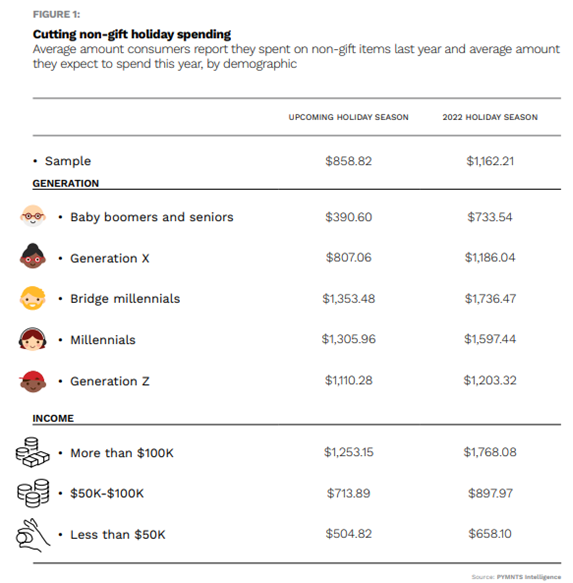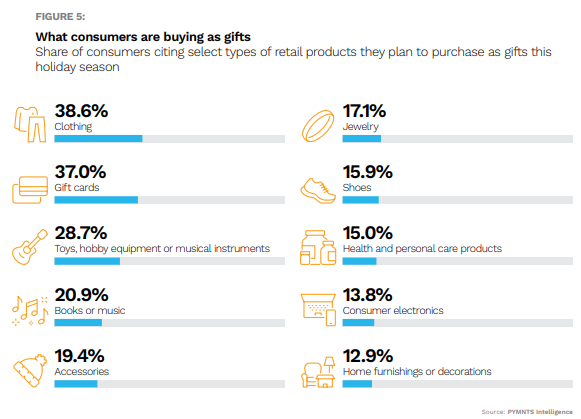5 Ways Consumers Choose to Pay This Holiday Season

’Tis the season …
… to puzzle out how to get everyone on your list, well, satisfied.
Without breaking the bank.
PYMNTS Intelligence data, headed into the holiday shopping frenzy — and well into it, as we are now, with less than a month till the New Year — reveals the pressures and moving parts of figuring out where and how we’re allocating funds to remain festive.
Trimming Trees, Trimming Budgets
Approaching Black Friday and Cyber Monday, the report “The Credit Economy: How Consumers Are Approaching Holiday Spending and Travel,” a PYMNTS Intelligence and i2c collaboration, revealed that consumers planned to cut spending by 26%.
But the trimming, so to speak, relates to non-gift-giving activities, where a pullback on live entertainment and spending on oneself (rather than others), would make room for spending on loved ones and acquaintances.
And drilling down a bit, the goal had been to spend about $860 on non-gift holiday purchases compared to $1,160 last year. A bit of shift is in the mix here, as spending on gifts was anticipated to grow a bit, in the aggregate, to $1,000.

Cards Still (Near) Top of Wallet
Cards remained the most popular payment method this holiday shopping season.
We found that 82% of millennials and 87% of higher-income consumers planned on using credit cards to pay for at least some of their holiday purchases.
And the data shows that some of the key items on the wish list — at least in terms of what would be rung up at the registers — equated to giving currency, of sorts, to others.
Looking at the chart below, we see that gift cards were nearly tied with clothing, and ahead of toys and hobby-related goods, as a key spending category. Perhaps the prevalence of gift cards makes sense, given the fact that we’re living in such an inflationary environment, and the cards themselves can boost a recipient’s spending power at a favored store or site.

Online Beats the Lines
Our post-Thanksgiving reporting shows that, as detailed in the report “Black Friday 2023: Consumers Widen Their Search for Holiday Bargains,” 48% of consumers in the United States made Black Friday purchases online. Of those, 28% shopped online exclusively. Only 16% shopped exclusively at brick-and-mortar locations. And there may be some dry powder in the waiting for deals and promotions headed into the final weeks of the year: 35% of U.S. consumers did not shop at all on Black Friday.
Paying Over Time in Demand
The data also show that buy now, pay later (BNPL) transactions, into Black Friday and Cyber Monday, were up 72% from the week before Thanksgiving. Merchants would do well to heed the clamor for stretching out payments, as 22% of consumers are seriously considering switching to competitors that offer this payment option.
Millennials — representing the most lucrative segment, with financial means to spend, the willingness to do so, and long customer lifetime values — are key demographics for BNPL. Nearly 1 in 3 of this group say they would be open to switch merchants if split-pay options were not available. Overall, consumers expect to finance 13% of holiday shopping.
Millennials May Rescue the Holidays
Beyond the desire for BNPL, PYMNTS Intelligence found that millennials spent the most during Black Friday. Specifically, millennials averaged about $585, 10% more than the population average. They were also the consumers who increased spending the most compared to last year, up 22%.
About 57% of U.S. consumers plan to make a purchase in the weeks following Black Friday and through Christmas … and the next few weeks will be critical ones for merchants of all types, online and offline.
